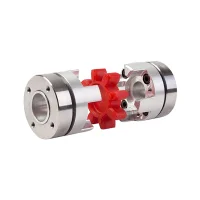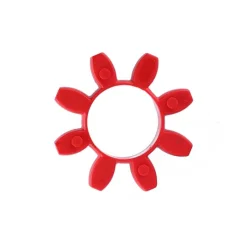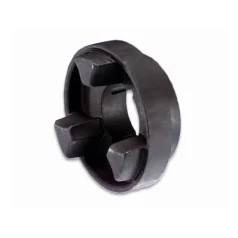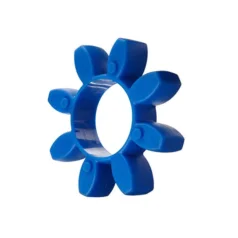Shaft Couplings for Reliable Power Transmission Without Interruptions
Shaft couplings and clutches are essential for any drive, used to dampen jolts and slight misalignments. They serve as alternatives to rigid links and cardan shafts. Clutches are made of aluminum or plastic for lower power outputs, and cast iron or steel for higher power outputs. Elastic couplings absorb shock and compensate for misalignment. Hydraulic and electromagnetic clutches transmit torque gradually until the driven shaft matches the drive shaft speed. Safety clutches protect against overloads.

With years of market presence, expertise and experience, we find the most appropriate and cost-effective technical solution for your application.
Custom-made seals with precision up to 0.1 mm for all industries. High-quality materials, adaptable shapes, and fast execution. Solutions for extreme conditions.
Reliability Where It Rotates – Industrial Shaft Couplings
Every industrial drive system requires one key component – one that compensates for misalignments, absorbs vibrations, connects the driving and driven shafts, and transmits torque without damage. These are shaft couplings – essential mechanical elements for reliable torque transmission in all types of drive systems.
Our offering includes a wide range of couplings and shaft connections suited for various operating conditions – from light-duty automation tasks to heavy-duty industrial loads. Available in materials such as plastic, aluminum, cast iron, or steel, they adapt to the demands and operating conditions of your system.
Functions of Shaft Couplings
Couplings and shaft connections serve multiple functions, the key ones being:
- Transmission of torque between two shafts
- Absorption of dynamic shocks and vibrations
- Compensation of axial, radial, and angular misalignments
- Protection of the drive system from mechanical damage
- Compact connection between different shaft types
They ensure stable and safe drive operation – even in the presence of mechanical irregularities like inaccurate alignment, angular displacement, or axial offset.
Overview of Shaft Coupling Types
Jaw Couplings
Composed of two jaw elements with an intermediate rubber insert. Suitable for medium-duty systems where minor shock absorption is needed.
- Excellent vibration damping
- Easy to install
- Allow slight axial and radial misalignments
Elastic Couplings
Use elastic rubber or plastic inserts to transmit torque while damping mechanical loads.
- Ideal for applications with frequent starts
- Compensate for axial, radial, and angular deviations
- Act as shock absorbers and protect the motor
Chain Couplings
Designed with a chain and two sprockets, providing a robust solution for heavy-duty industry.
- Capable of high power transmission
- Easy maintenance (just remove the chain)
- Excellent shock resistance
Clamp Shaft Couplings
Operate backlash-free and ensure rigid yet precise power transmission.
- Easy adjustment without a key
- Ideal for servo drives
- Compact design
Rubber Shaft Couplings
Made from highly elastic rubber materials, these couplings offer quiet and secure shaft connections.
- Quiet, maintenance-free operation
- Dampen high-frequency vibrations
- For low-demand or automated applications
Gear Shaft Couplings
With radial gear teeth, they allow for highly precise angular and axial misalignment compensation.
- High torsional stiffness
- Angular displacement compensation up to 2°
- Used in CNC, robotics, and machinery construction
Universal Joints (Cardan Shafts)
Designed to transmit power at significant angular displacements.
- Compensate angular misalignments up to 30°
- Available in telescopic versions
- Ideal for machines with dynamic axis displacements
Elastic vs. Rigid Couplings – What to Choose?
- Elastic Couplings: Absorb shocks, dampen vibrations, and tolerate greater misalignments (perfect for fluctuating or unstable loads).
- Rigid Couplings: Best where exact, direct power transmission without torsional losses is needed (e.g. positioning systems, servo motors).
Also available:
- Compensating couplings with axial movement
- Toothed couplings for combined axial and radial compensation
- Universal joints for extreme angular offsets
Why Choose Our Shaft Couplings?
- Wide selection: from micro couplings to cardan joints
- Material variety: steel, cast iron, aluminum, plastic
- Customization: various dimensions, tolerances, and mounting options
- Custom supply or sets with accessories (bolts, spacers)
- Technical support: we help select based on load, RPM, and application needs
Applications
Shaft couplings are used across all sectors involving torque transmission:
- Machinery construction
- Transport systems
- Agricultural machinery
- Compressors and pumps
- Robotics and automation
- Toolmaking, CNC machines, packaging industry
Need help with selection, calculations, or drawings? Contact us – we’re happy to help you build the best connection between your shafts.



